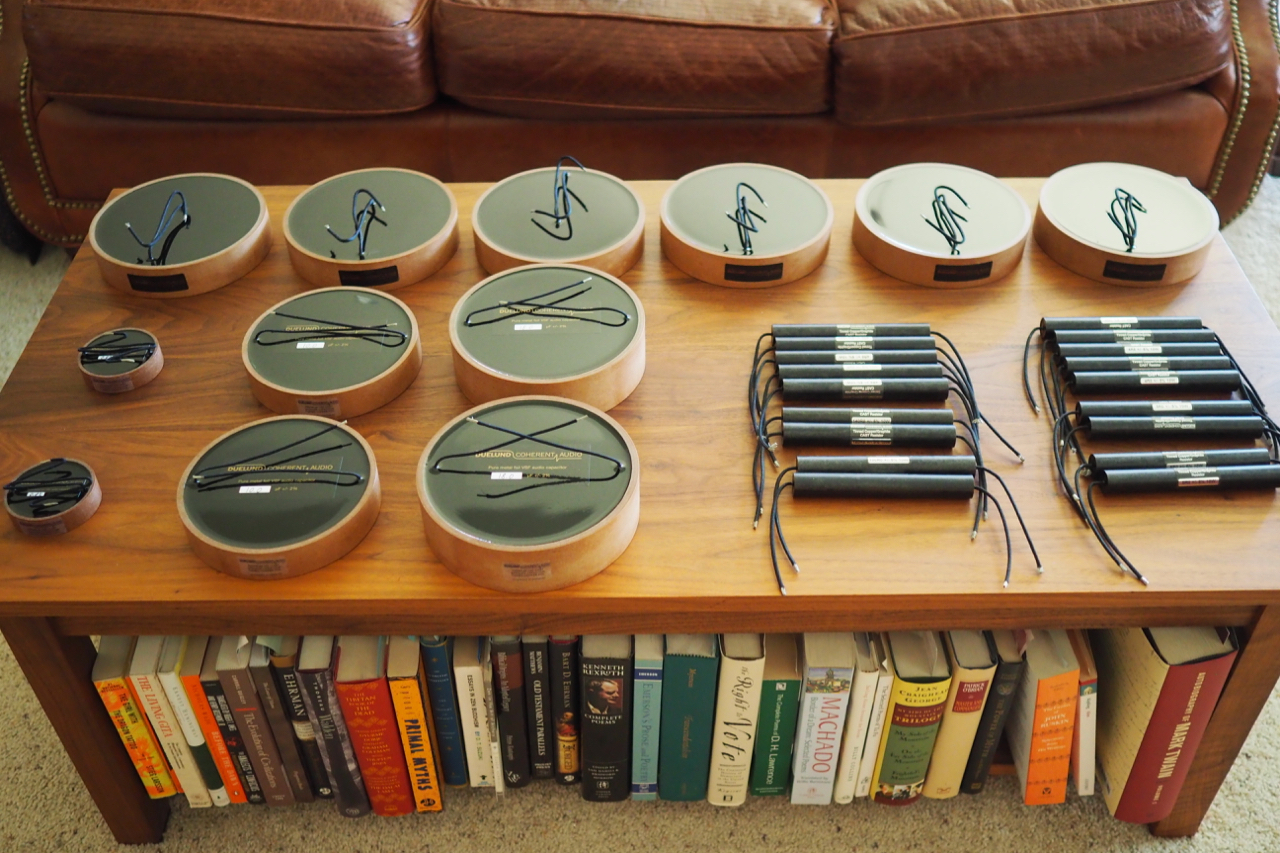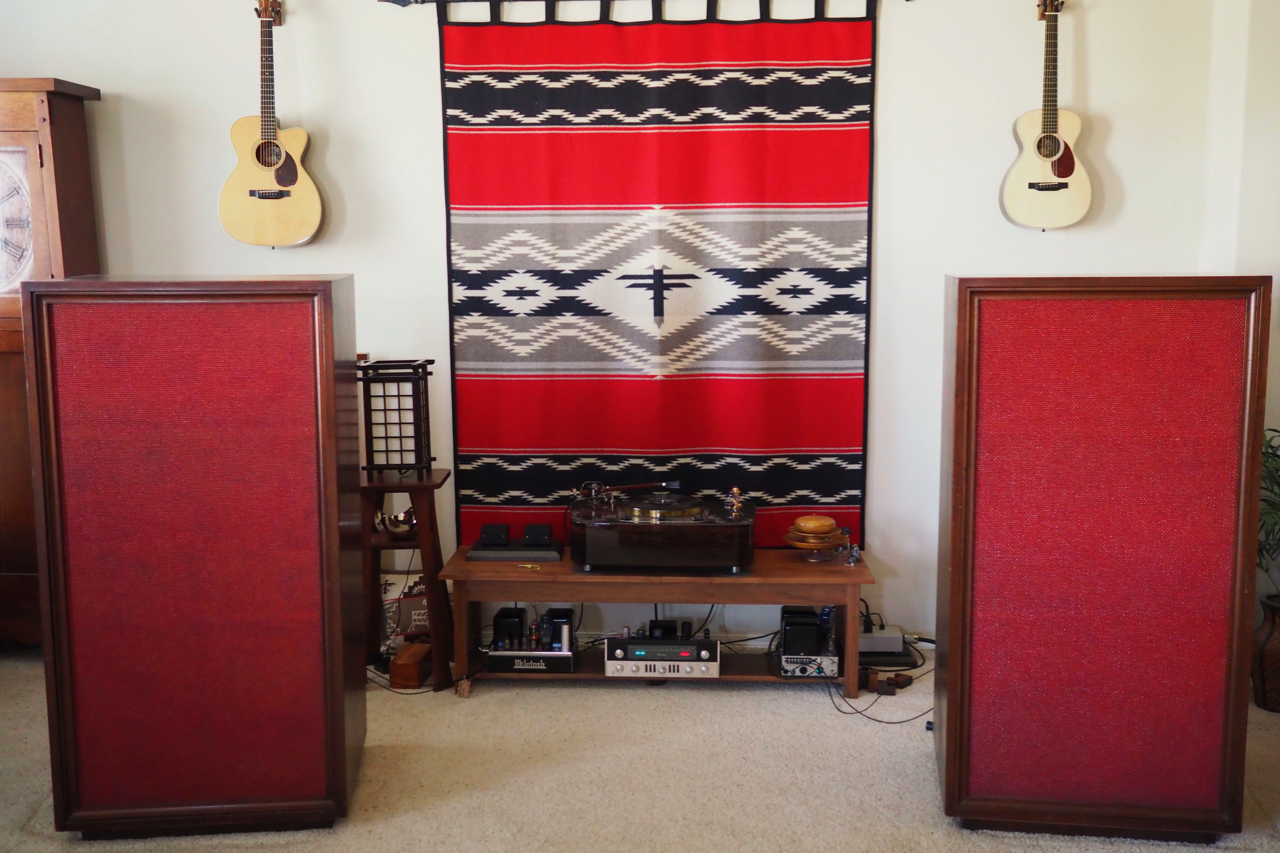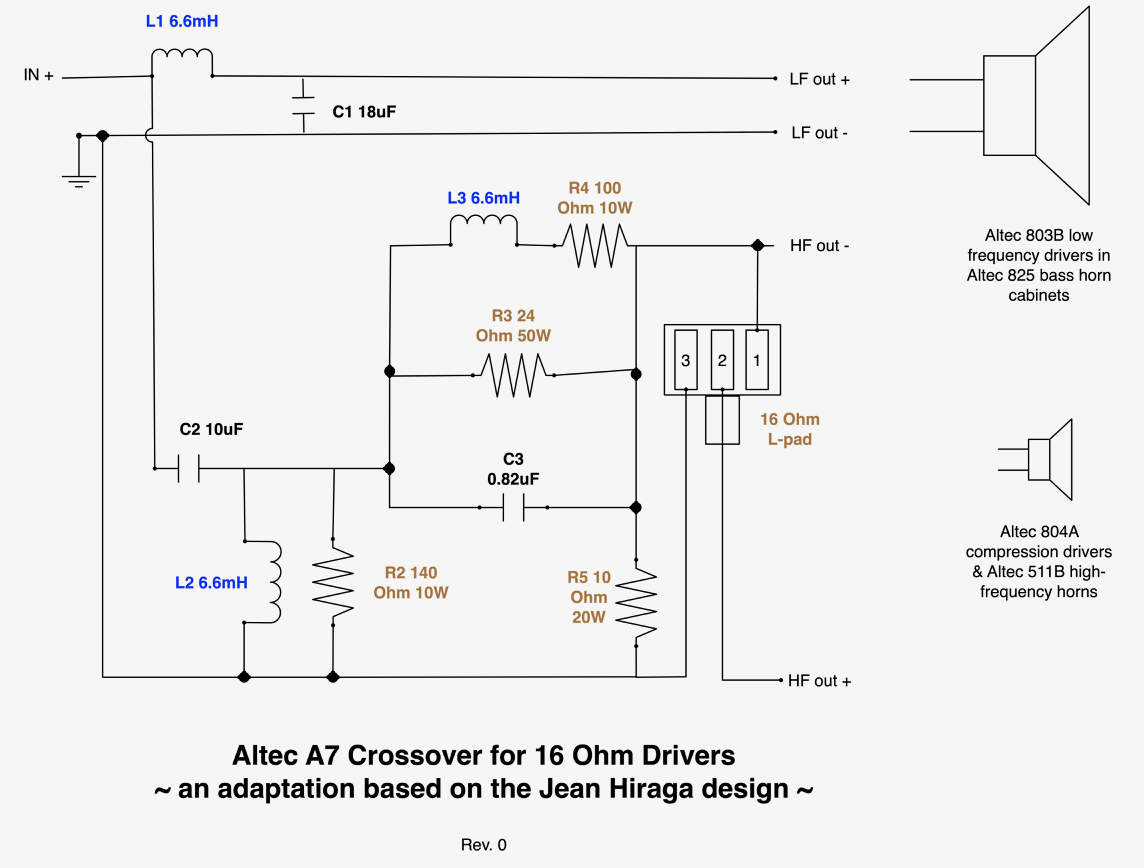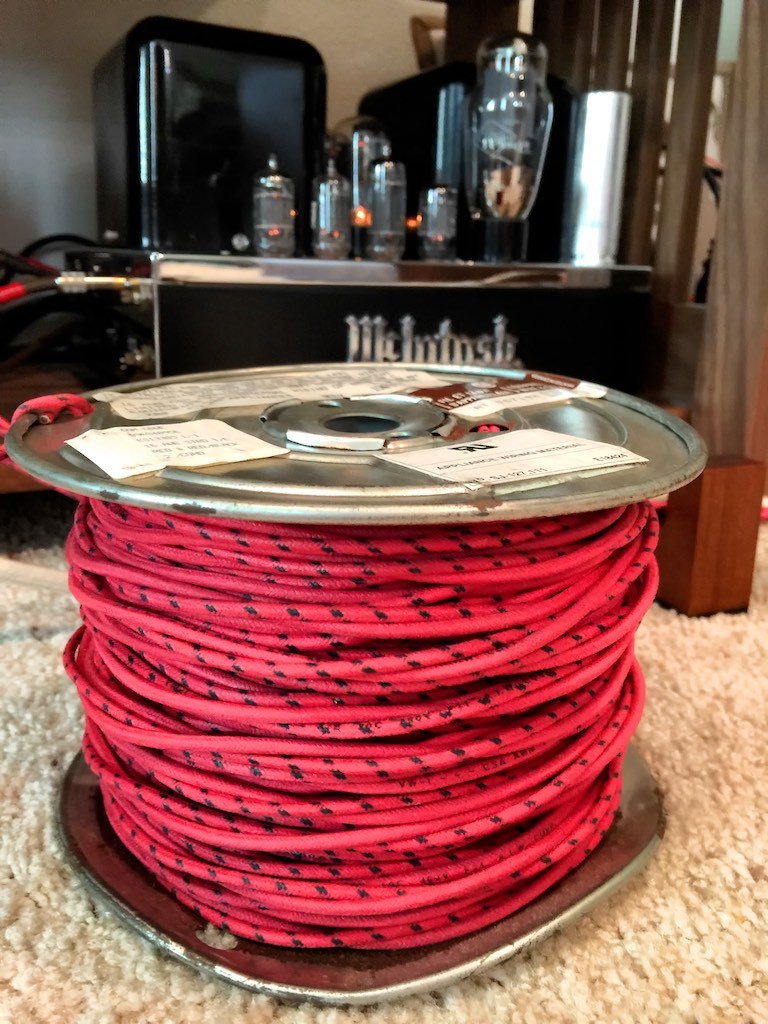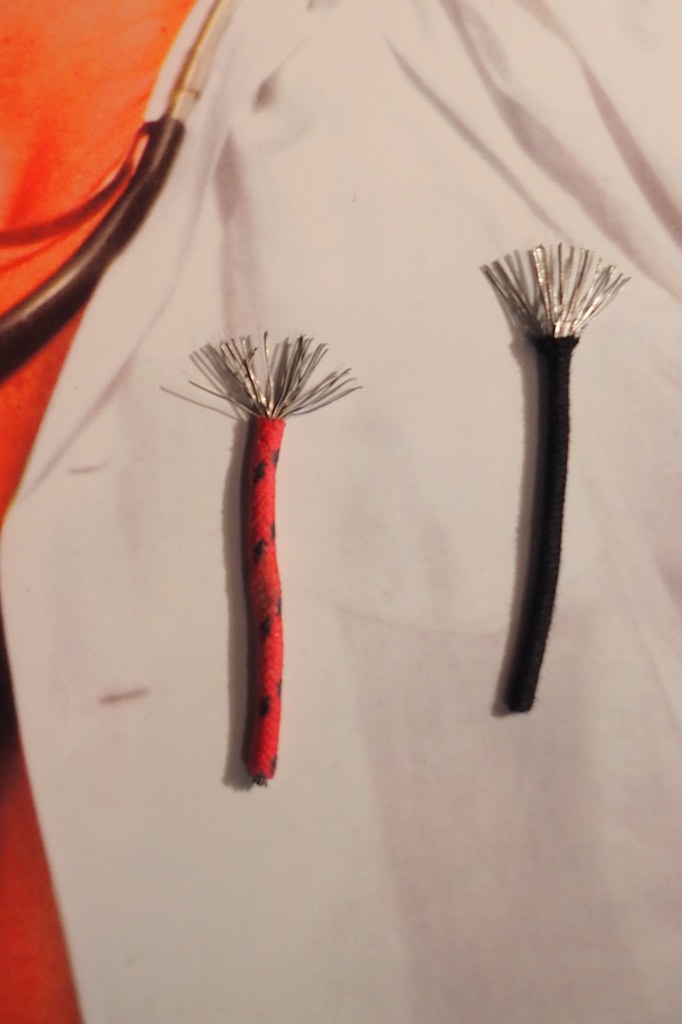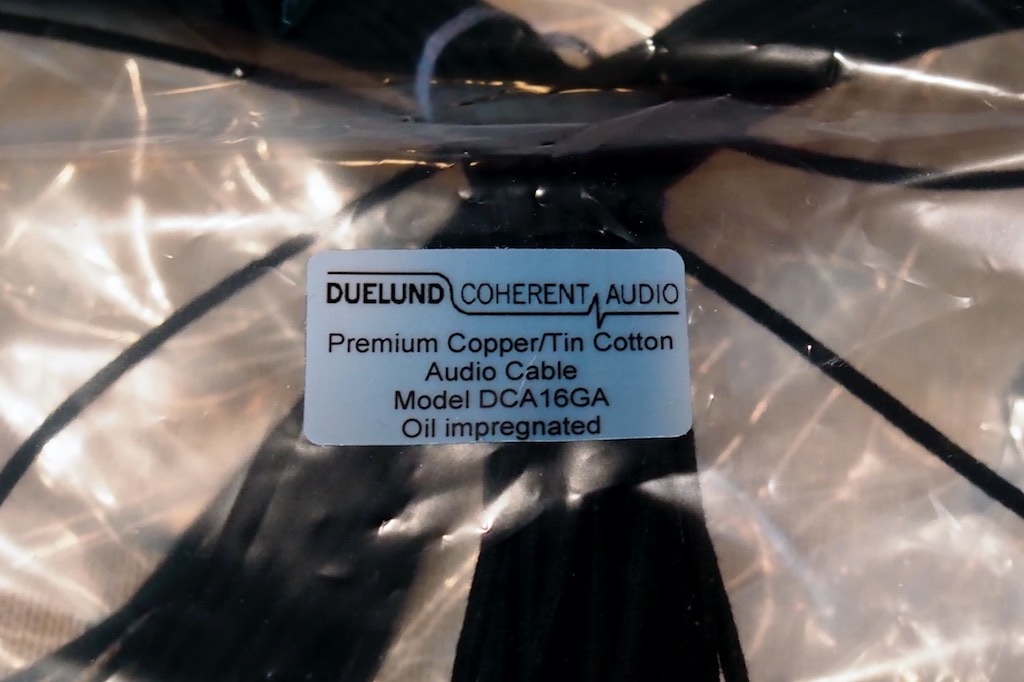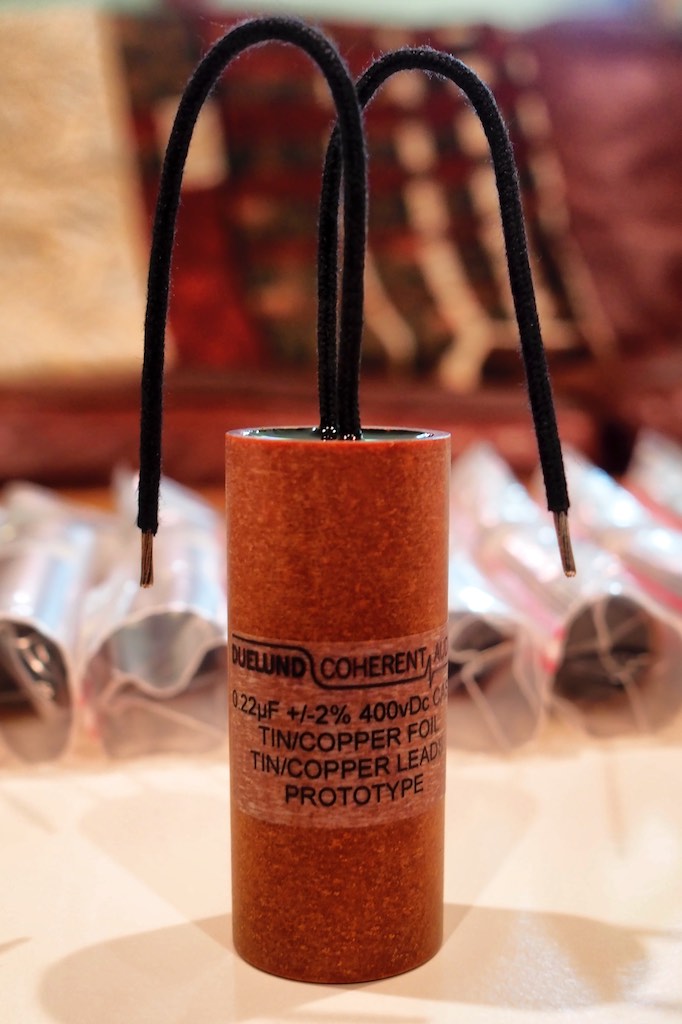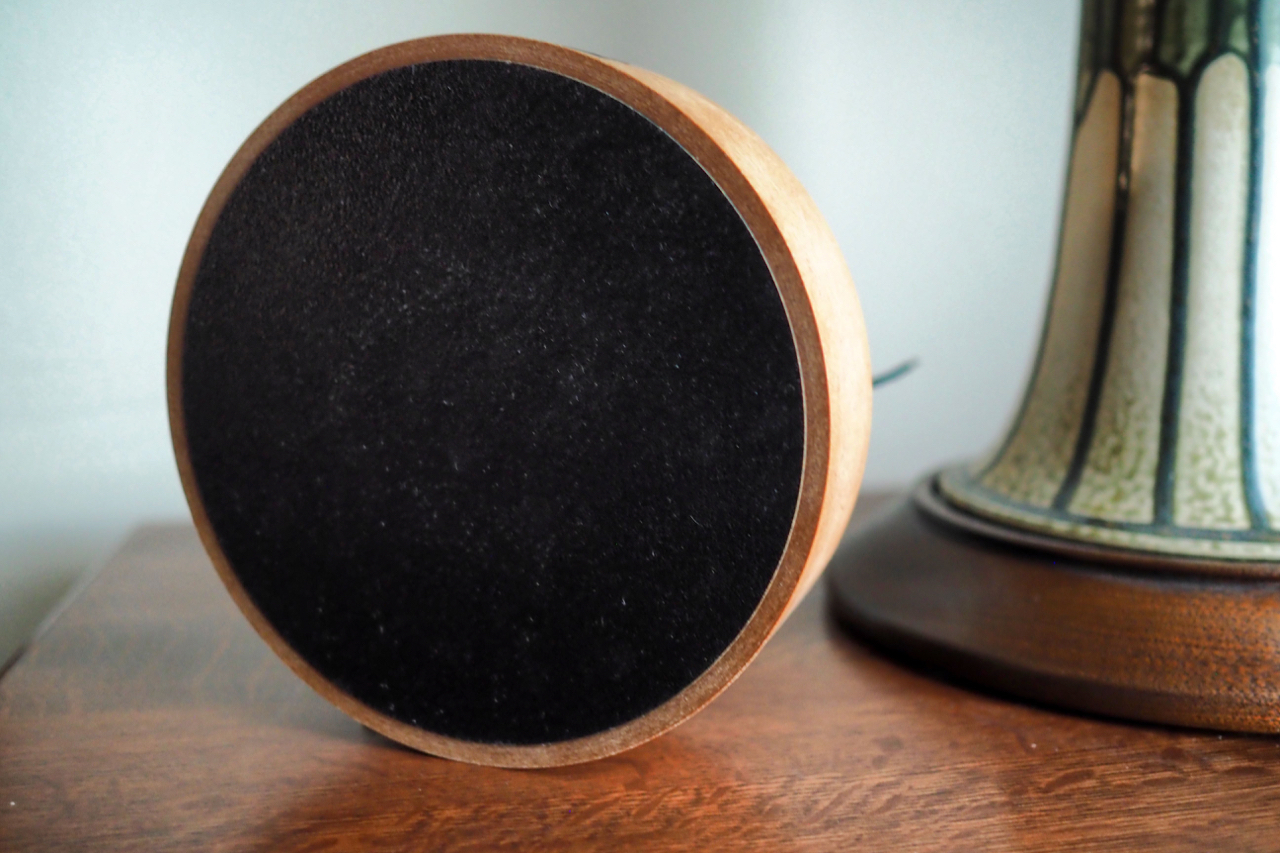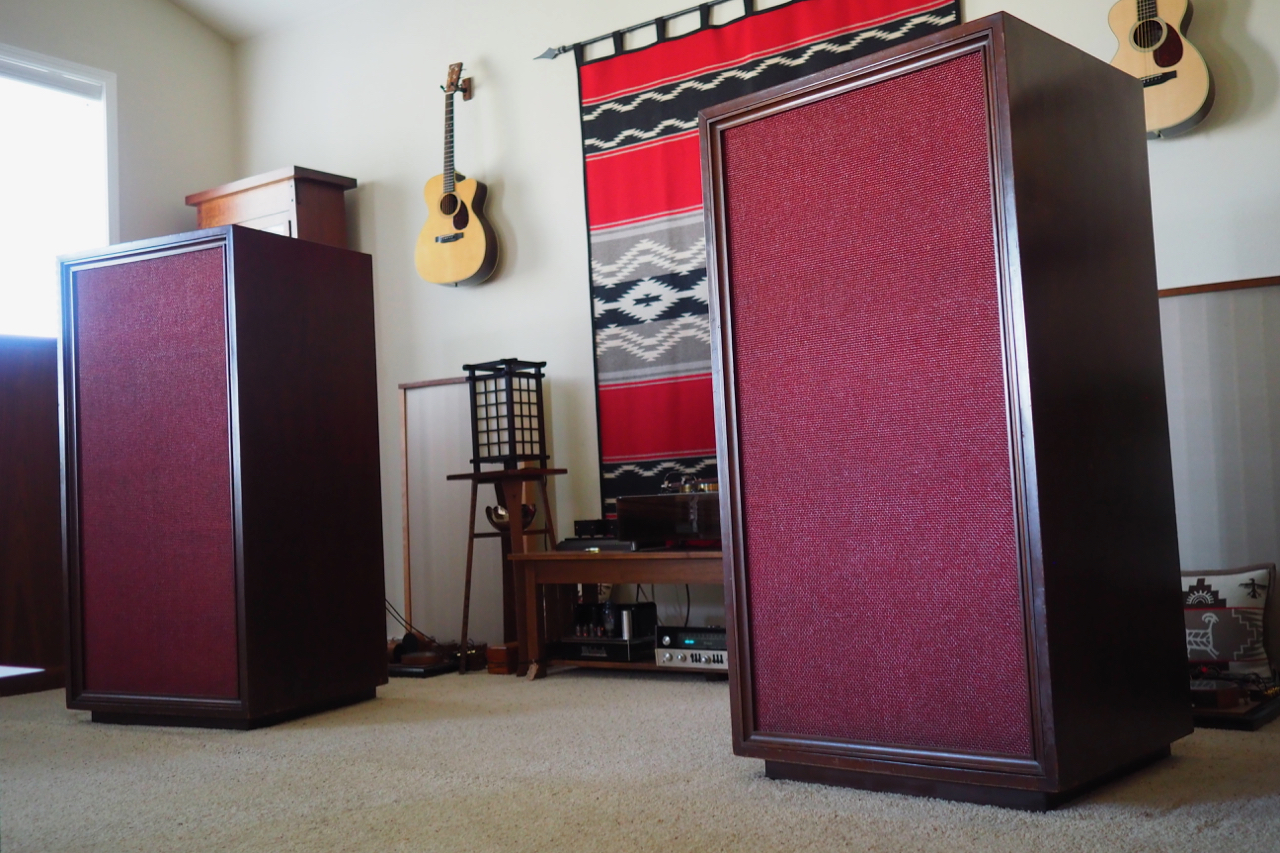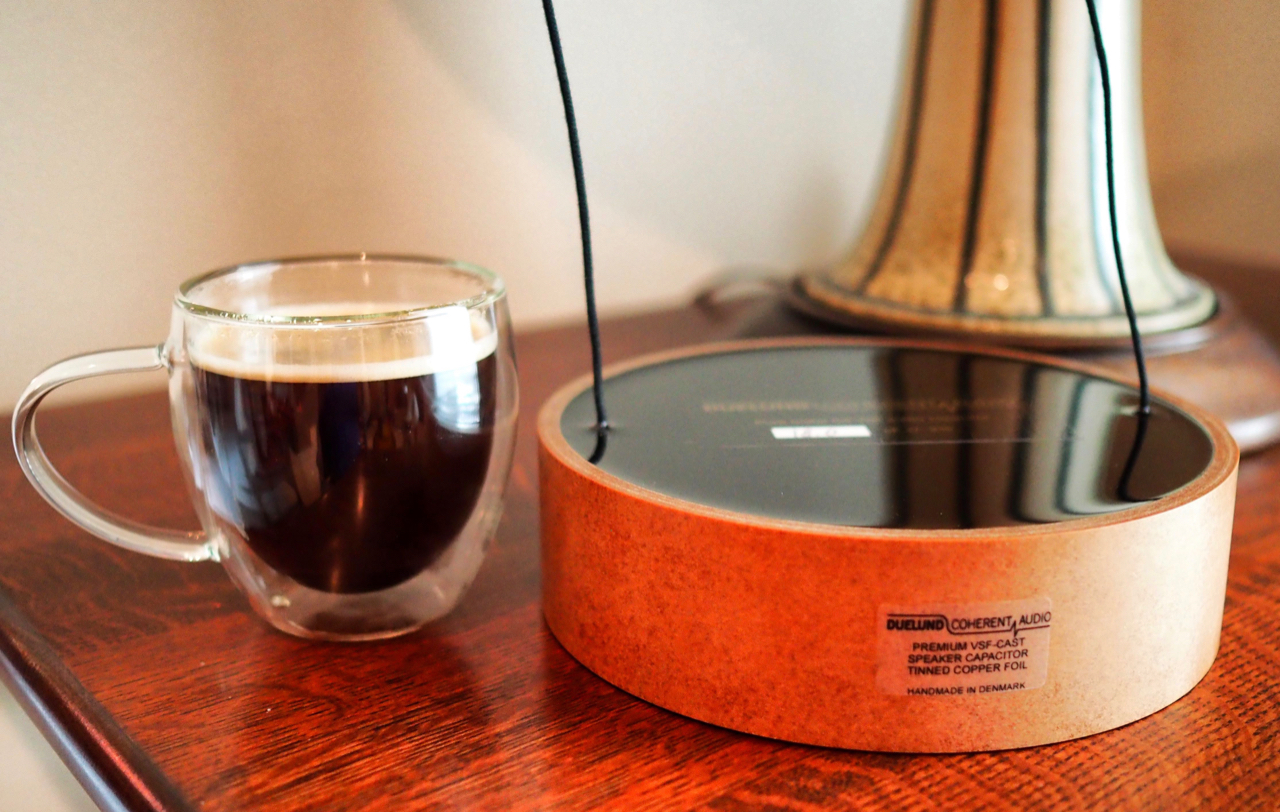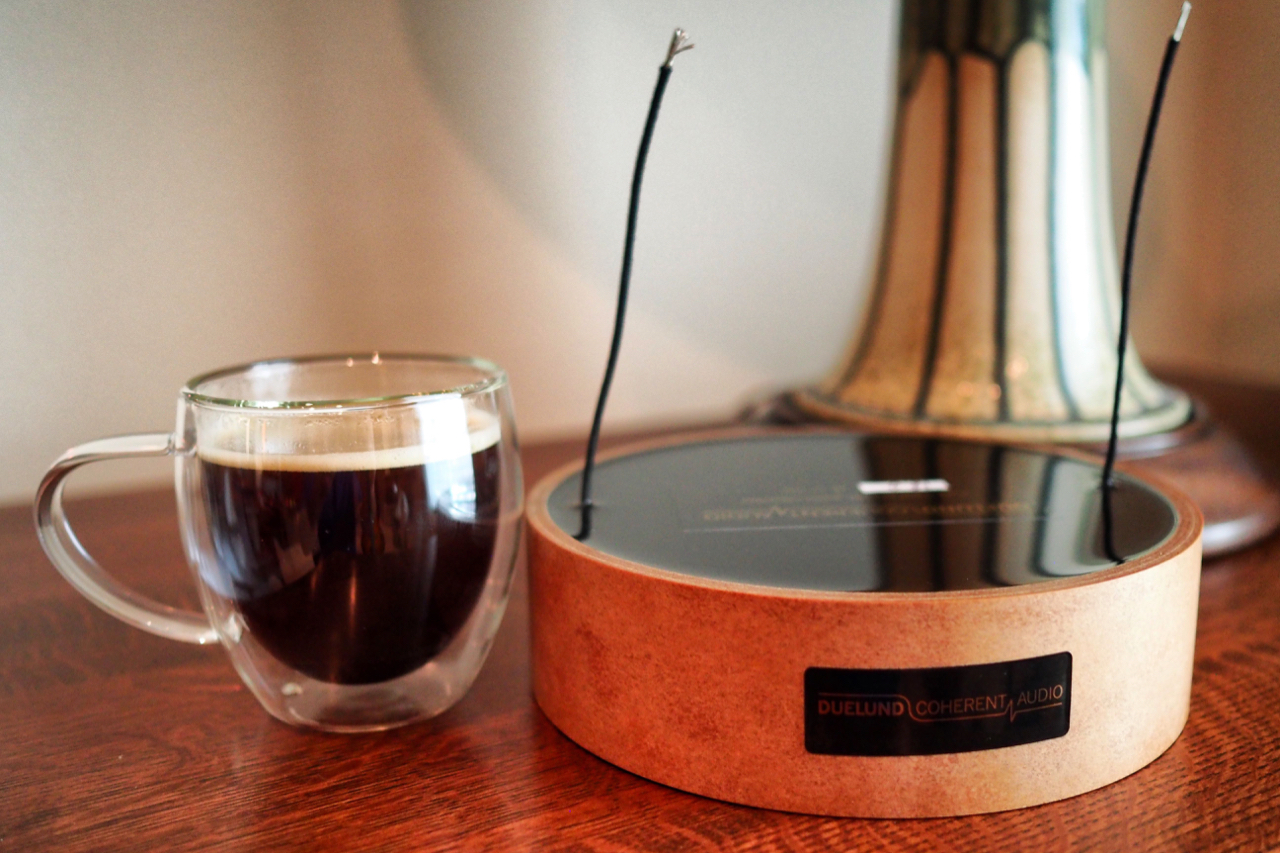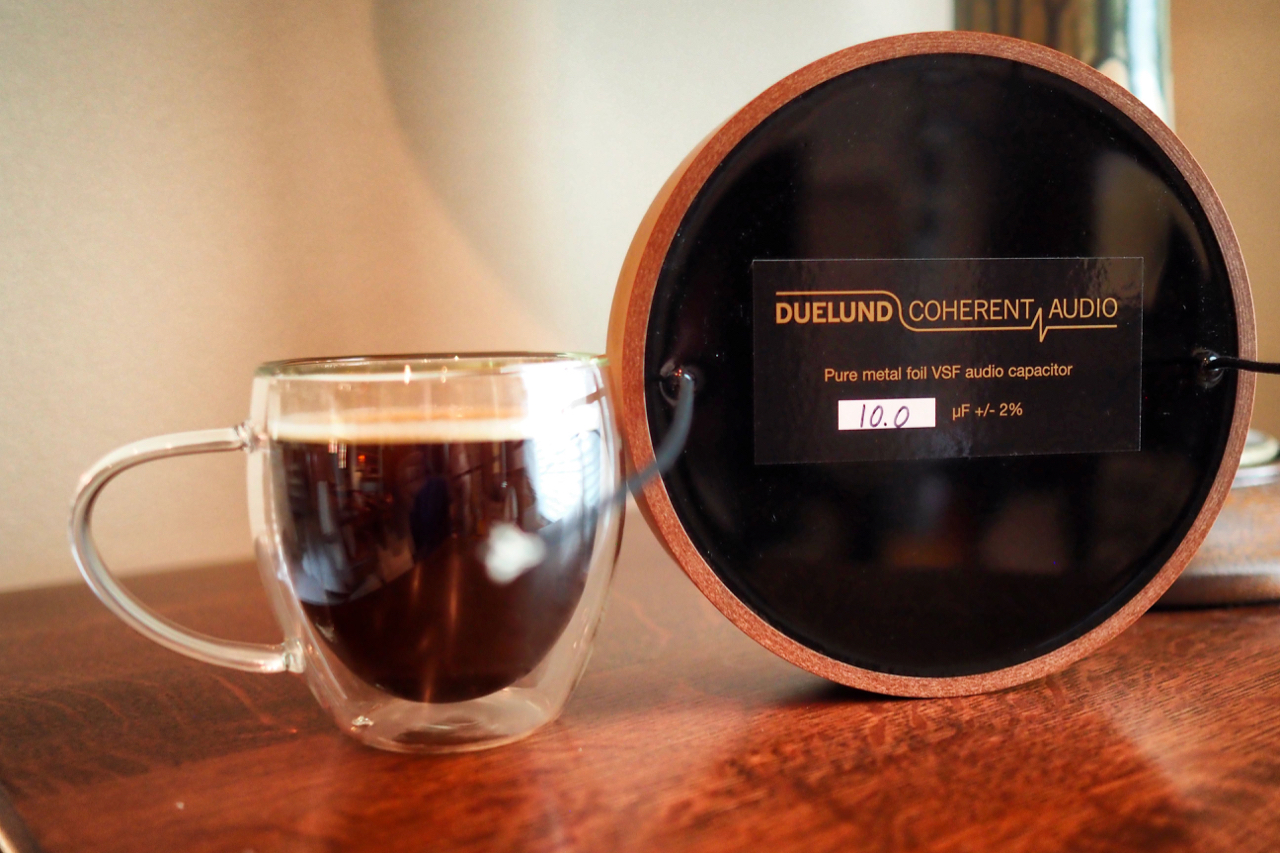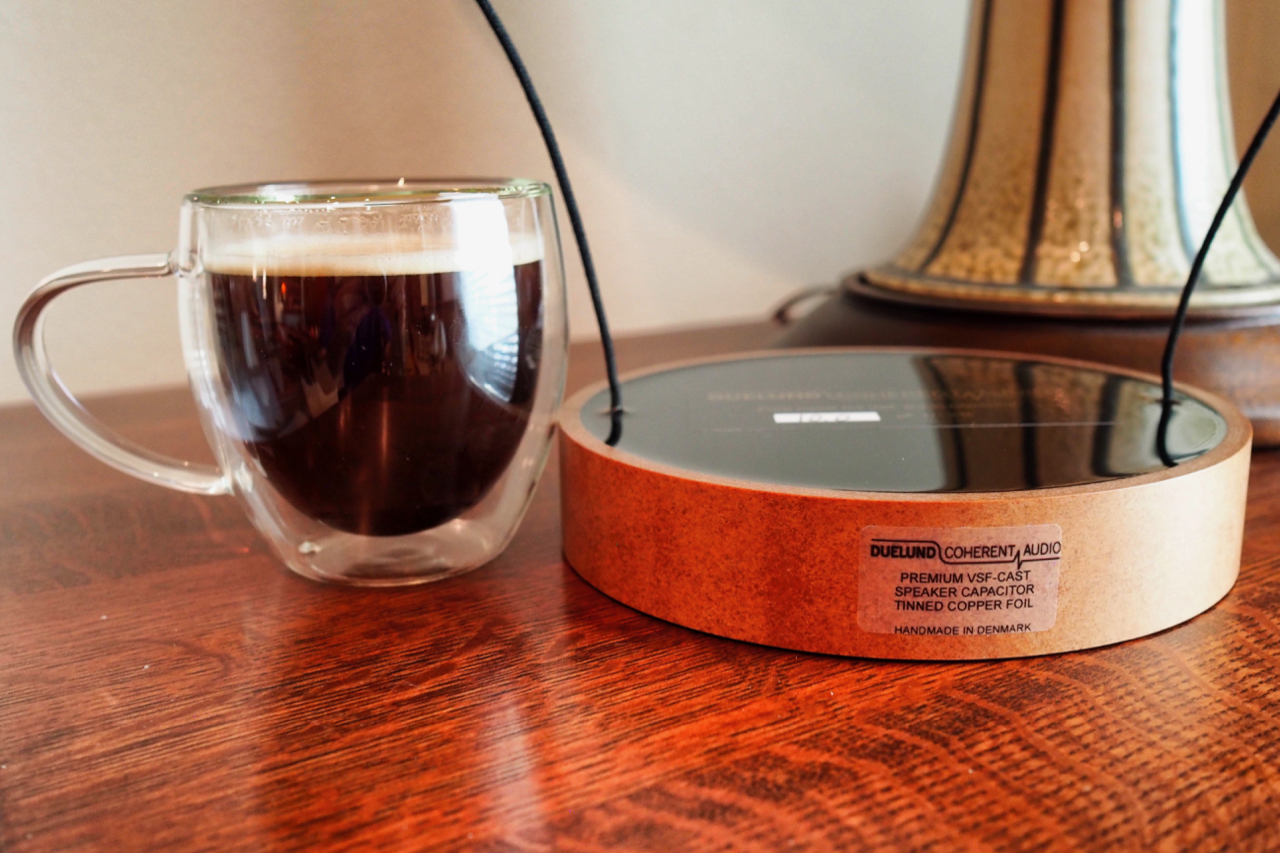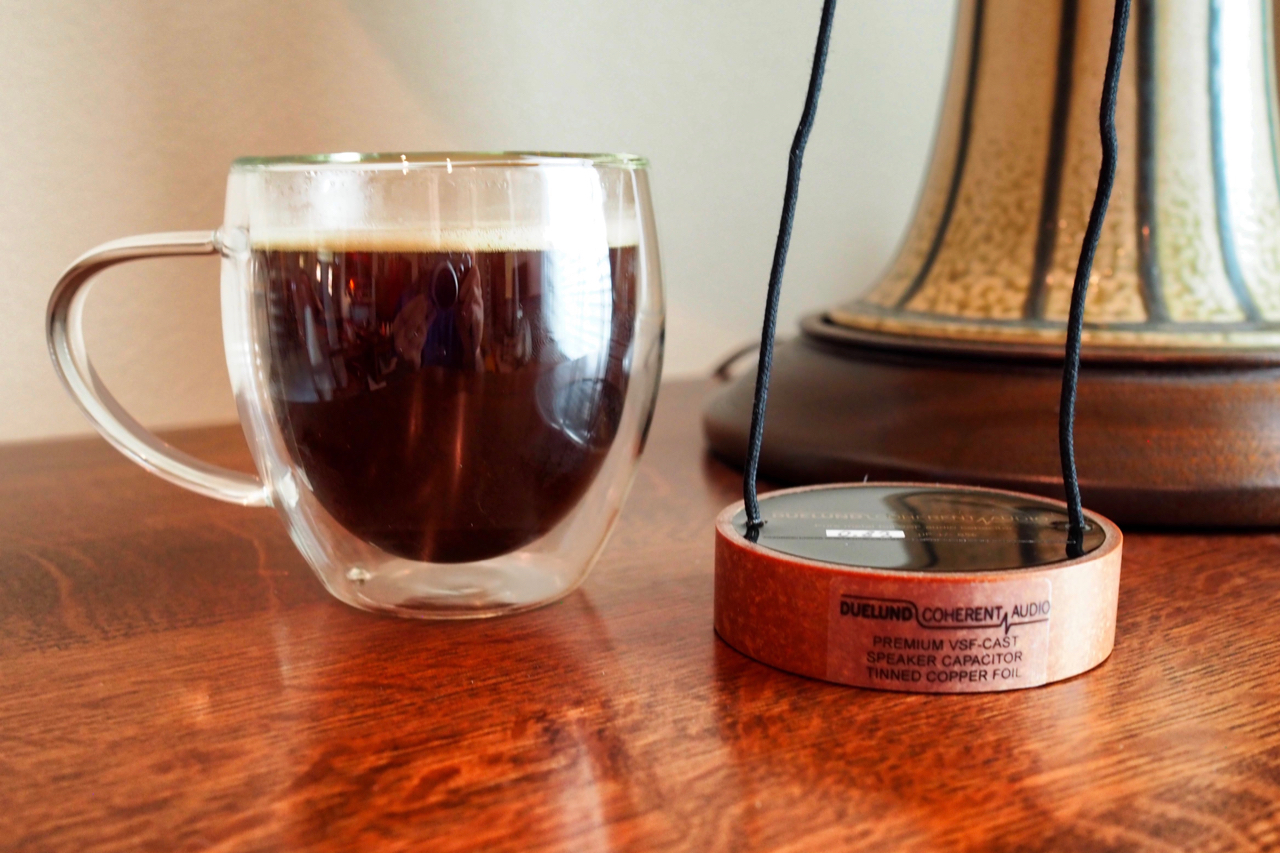The Duelund-Altec Project is a world’s first for crossovers built exclusively using the new Duelund CAST tinned-copper (Sn-Cu) components (below), and these particular crossovers are currently the only crossovers of their kind in existence, at least for a while, until others start building their own crossovers with the new Duelund CAST Sn-Cu components.
In the Duelund-Altec Project we will be building crossovers consisting entirely of the new Duelund CAST Sn-Cu Air Core Inductors, Duelund CAST Sn-Cu Paper In Oil Capacitors, the custom Duelund CAST Graphite / Sn-Cu "Jeffistors" (resistors) Frederik made for me, and Duelund DCA Sn-Cu wire, for the historically important vintage Altec loudspeakers that Altec built for conductor Leopold Stokowski to listen to music with at his New York City home, circa 1961 - 1964, before Dr. Stokowski moved back to London to further his recording career in 1972 at age 90.
The Stokowski Altec’s individual components are generally representative of early Altec A7 Voice of the Theatre loudspeakers, with 803B 16-Ohm bass drivers housed in 825 style bass horn cabinets, Altec 804A 16-Ohm compression drivers on Altec 511B horns, and Altec N-500-D crossovers.
The primary difference between production Altec A7’s and the Stokowski Altec’s are the massive wooden cabinets the speakers were enclosed in to make them domestic-friendly from an appearance standpoint, and the accompanying burgundy speaker grills.
You can read more about the history of the Stokowski Altec's HERE, but the short version of their history is that Dr. Stokowski listened to music with these custom Altec's during the period he was conducting the American Symphony Orchestra from 1962-1972 (there's a great overview of Leopold Stokowski's life and career that you can read HERE), and then Dr. Stokowski gave the Altec's to a colleague at the American Symphony Orchestra (one of his conducting students), upon his move to London in 1972.
Jeff (another Jeff!) bought them from Stokowski's conducting student while living in New York, over 40 years ago now, and then brought the Altec's with him when he made the move to Seattle to work for Microsoft.
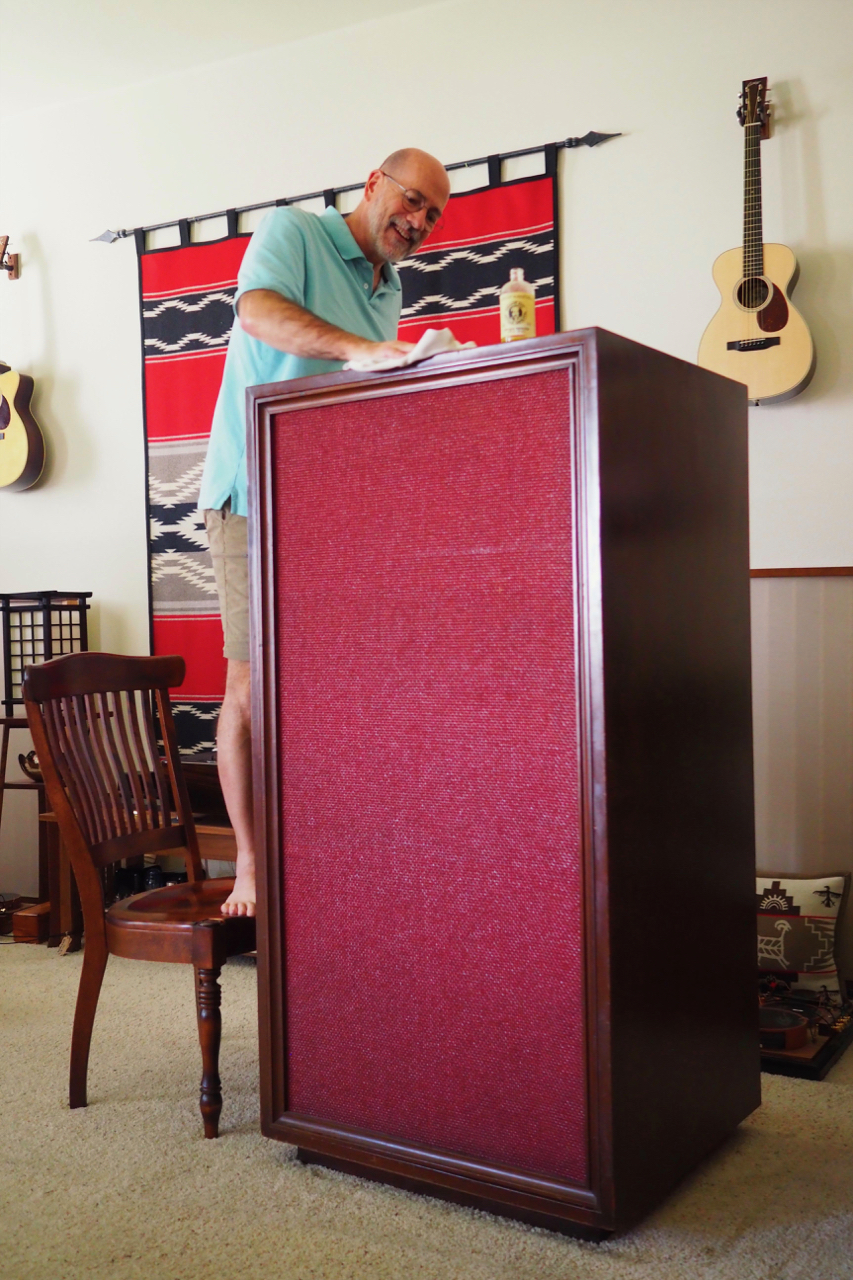
Polishing the Stokowski Altec cabinets with some Kramer's Best Antique Improver. I think I need more Kramer's!
Jeff and Lynn decided the Stokowski Altec's were too big for their condo in Seattle and put them up for sale (photos don't always give a clear indication of the Altec's true size, but the photo with me in it for scale above does - they're big!).
After corresponding with Jeff and Lynn a bit about the Stokowski Altec speakers, my buddy Ron Barbee and I made the trip to Seattle in November 2015 to inspect and listen to them, and after so doing I bought them, and Ron and I made the journey back to my place with the big Altec's. Thank you Ron, Jeff, and Lynn for such a memorable grand adventure!
I've had the Stokowski Altec's for nearly three years now and I love them, and needless to say I am very excited about showcasing the new Duelund CAST Sn-Cu components in their crossovers, a fitting setting for the world premier of the first set of crossovers constructed entirely of the new Duelund CAST Sn-Cu components!
I can't thank Frederik Carøe enough for making the Duelund-Altec Project possible by providing all of these beautiful custom and handmade Duelund CAST Sn-Cu components to showcase in the project – you’re awesome, Frederik!
For the Duelund-Altec Project we will be using the following Duelund CAST Sn-Cu components to build crossovers according to the diagram above:
- Six 6.6mH Duelund CAST Sn-Cu Air Core Inductors for L1, L2, and L3.
- Two 18uF Duelund CAST Sn-Cu capacitors for C1.
- Two 10uF Duelund CAST Sn-Cu capacitors for C2.
- Two 0.82uF Duelund CAST Sn-Cu capacitors for C3.
- Two custom 140 Ohm 10W Duelund CAST Graphite / Sn-Cu "Jeffistor" resistors for R2.
- Two custom 24 Ohm 50W Duelund CAST Graphite / Sn-Cu "Jeffistor"resistors for R3.
- Two custom 100 Ohm 10W Duelund CAST Graphite / Sn-Cu "Jeffistor"resistors for R4.
- Two custom 10 Ohm 20W Duelund CAST Graphite / Sn-Cu "Jeffistor"resistors for R5.
My last post was the world premier of the new 6.6mH Duelund CAST tinned-copper (Sn-Cu) Air Core Inductors from the very creative mind of Frederik Carøe.
Now with the above background as a prelude, in this post I want to tell you more about the Duelund CAST Sn-Cu paper-in-oil (PIO) capacitors.
Frederik Carøe's interest in tinned-copper conductors was piqued by my listening trials with vintage Western Electric WE16GA wire (below) that revealed their rather remarkable musical & sonic performance in creating a live-like presentation of recorded music in terms of tone, presence, and dynamics, with a remarkably vivid and engaging overall presentation of the music.
My writing about the Western Electric WE16GA caused a major wave of interest in the affordable (at the time) vintage wire, and the available stocks were quickly depleted.
Frederik created a Duelund-style interpretation of the Western Electric WE16GA tinned-copper wire - the Duelund DCA16GA tinned-copper wire - utilizing the same number and gauge of conductors, and an even more purist-style of insulator composed of baked oil-soaked cotton, which offered even better performance than the vintage Western Electric wire.
The Duelund DCA16GA wire became a runaway hit with audio enthusiasts around the world, and shortly thereafter Frederik introduced several more gauges of the Duelund DCA tinned-copper wire that customers had been requesting, the Duelund DCA12GA, DCA20GA, and DCA26GA. You can read the full report about all of these DCA wires HERE.
Then Frederik made the creative leap of using tinned-copper foil to make some prototype Duelund CAST Sn-Cu capacitors.
Back in October of 2016 when I listened to the prototype Duelund CAST tinned-copper (Sn-Cu) capacitors after I installed them into my vintage McIntosh MX110Z tuner-preamplifier's cathode follower, and the high-frequency section of my vintage Altec A5 Voice of the Theatre loudspeakers' crossovers, I was absolutely blown away by their performance.
The prototype Duelund CAST Sn-Cu capacitors weren't just good, they were remarkable, and so much better than any other capacitor I've tried that the second place capacitor wasn't even in the same time zone.
The prototype Duelund CAST Sn-Cu capacitors excelled on the triune hallmarks of live music in terms of tone, presence, and dynamics, as well as being vivid, transparent, natural sounding, and astonishingly life-like in their portrayal of musical qualities of tone, timbre, tempo, rhythm, beat, and the like. As a bonus they also brought a nice boost in performance to those audiophile cherished traits of soundspace, soundstage, and imaging.
I'm not the only one who has been similarly impressed by the Duelund CAST Sn-Cu capacitors either, as Humble Homemade HiFi gave the production version of the Duelund CAST Sn-Cu capacitor the highest rating ever received by a capacitor in their evaluations, which you can read about HERE.
I know a lot of you out there consider Duelund CAST capacitors to be the world's finest capacitor, and true to form the new Duelund CAST Sn-Cu capacitors are world beaters - they are simply amazing.
Personally, I think capacitor history is being made right now by what Frederik and Duelund have done with the CAST Sn-Cu capacitors, they're that good. What Frederik has done in creating the Duelund Sn-Cu capacitors is truly remarkable.
Let me remind you of the description of how Duelund CAST capacitors are made as told to me by Frederik during the Duelund-Westminster Project, which I lightly edited to replace "pure copper or silver" foils with "tinned-copper" foils for readability's sake.
The new Duelund CAST Sn-Cu capacitors are made exactly the same way as the pure copper or silver Duelund CAST capacitors used in the Duelund-Westminster Project except that they use tinned-copper foils instead of pure copper or silver foils.
¸¸.•*¨*•♫♪¸¸.•*¨*•♫♪¸¸.•*¨*•♫♪
The Duelund CAST capacitors are the ultimate expression of Mr. Steen Aa. Duelund’s thirty-five years of research into perfecting capacitor design for audio use, and as Frederik has said, “The legacy of Mr. Duelund is to never accept compromise, and that is a principle we proudly uphold in the Duelund CAST capacitors.”
Frederik told me that many capacitors today use an insulating plastic film as the dielectric because it makes them inexpensive to produce, but the problem with using plastic is that it noticeably degrades the audio signal, “With plastic you get what Steen would describe as an echo, masking the real details of the signal”.
So in the Duelund CAST Sn-Cu capacitors, like the pure copper and silver foil Duelund CAST capacitors, Frederik doesn’t use any plastic, but rather only annealed tinned-copper foil in natural paper and oil, along with resonance control both inside and outside the capacitor.
A capacitor is made using two foils with paper between the foils, which results in capacitance being created in the electric field between them.
Each Duelund CAST Sn-Cu capacitor is completely hand crafted in an incredibly labor intensive process:
“Foils of tinned-copper are initially wound with paper to a certain value that is a good deal over the needed capacitance. Then the foil is put under vacuum pressure in an oil tank at high temperature for about a week, so that everything inside the winding undergoes vacuum impregnation and is permeated by oil."
"When this process is done, the resulting foil is wound by hand in a humidity and temperature-controlled room to an exact specification, and then it is placed back into the oil."
"Immediately after this process the winding is sealed by the use of a special lacquer, which is also used in the yacht industry to seal against moisture. This takes another week. During this process a ring of vacuum impregnated paper has been readied with a base of our CAST material.”
“The winding is heated and then placed in the ring & base assembly and CAST material is poured on top of it in five stages, with air bubbles in the CAST material being forced out by applying a very precisely controlled flame to the surface (yes really!). This process takes another week. Following this step the capacitor is measured and checked (as it has been at every step along the way), and if everything is ok, then we ship it to the customer. The total production time is typically six to eight weeks.”
Other than their obvious high quality, one of the most striking aspects of the Duelund CAST Sn-Cu capacitors are their large size and heavy weight, which is due to their perfectionist design using natural materials and Sn-Cu metal foil – they simply have to be larger than mass produced capacitors using this approach.
Frederik says the careful selection of materials and the Duelund no holds-barred style of design provides dramatic benefits for audio applications:
“From a performance standpoint, the main thing is an absolute lack of coloration, and a much more natural presentation – things don’t float around but stay locked in time and space. How you perceive and understand the layers in the music becomes greatly enhanced, primarily because of the sudden silence in between notes. Micro and macro dynamics take on a whole new meaning. Mr. Duelund would liken it to drinking Coke your entire life and then suddenly having a drink of pure water.”
¸¸.•*¨*•♫♪¸¸.•*¨*•♫♪¸¸.•*¨*•♫♪
As mentioned earlier, in the Duelund-Altec Project we are using the new Duelund CAST Sn-Cu capacitors in positions C1 (18uF), C2 (10uF), and C3 (0.82uF) of the Hiraga-inspired crossovers for the grand ol' vintage Altec's (above) according to the modified Hiraga-style crossover (see schematic below).
Duelund CAST Sn-Cu 18uF capacitors for C1
Each Duelund CAST Sn-Cu 18uF capacitor is 7 1/4 inches across (18.42cm), 2 inches tall (5.1cm), and weighs 2478 grams (5.47 pounds).
All of the Duelund CAST Sn-Cu capacitors used Duelund DCA16GA tinned-copper wire for leads.
To give you a better idea of the size I've shown the Duelund Sn-Cu capacitors with an 8 ounce coffee cup for a size comparator.
I photographed the 18uF Duelund CAST Sn-Cu capacitors from a few different angles so you could get a better idea of what they look like.

CAST base of the 18uF Duelund CAST Sn-Cu capacitor with 8 oz. coffee cup for a size comparator. Notice the leather-like texture of the CAST base material.
Duelund CAST Sn-Cu 10uF capacitors for C2
Each Duelund CAST Sn-Cu 10uF capacitor is 6 inches across (15.24cm), 1 1/4 inches tall (3.18cm), and weighs 1309 grams (2.89 pounds).
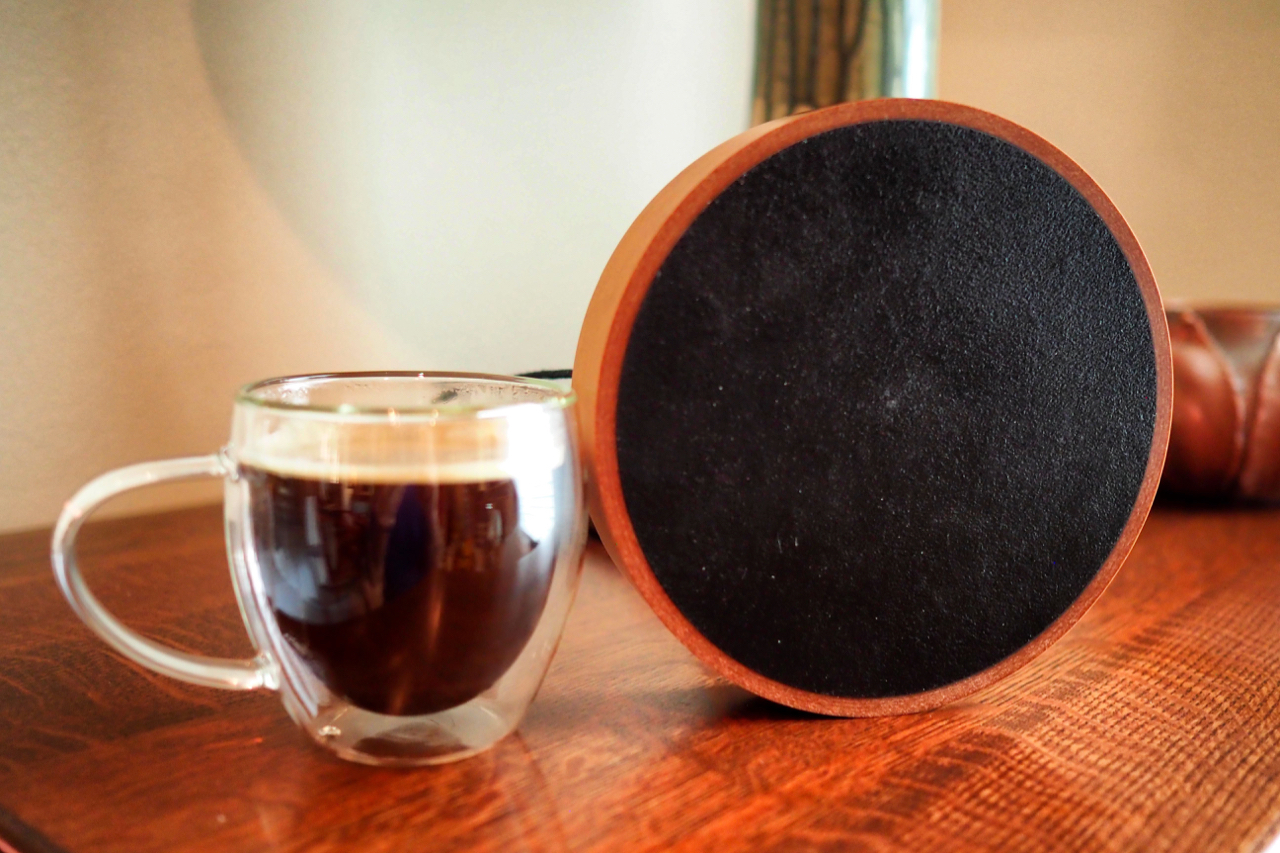
CAST base of the 10uF Duelund CAST Sn-Cu capacitor shown with 8 oz. coffee cup for a size comparator.
Duelund CAST Sn-Cu 0.82uF capacitors for C3
Each Duelund CAST Sn-Cu 0.82uF capacitor is 2 7/8 inches across (7.3cm), 3/4 of an inch tall (1.91cm), and weighs 153 grams (0.34 pound).
I hope the descriptions and photos gives you a better feel for what these Duelund CAST Sn-Cu capacitors are like.
Pricing for the Duelund CAST Sn-Cu PIO capacitors is similar to the pricing of the Duelund CAST pure copper foil PIO capacitors, being just a bit more to account for the more expensive tinned-copper foil used in them, but I don't have any firm pricing information yet.
For example, a 16uF Duelund CAST copper foil PIO capacitor's MSRP is $1899 USD, and a 20uF Duelund CAST copper foil PIO capacitor's MSRP is $2358 USD, so if you split the difference you get a MSRP of about $2128 USD for an 18uF Duelund CAST copper foil PIO capacitor.
A 10uF Duelund CAST copper foil PIO capacitor has an MSRP of $1268 USD, so the 10uF Duelund CAST Sn-Cu would be slightly more expensive than that.
That should help give you an idea of costs.
Ok, that's it for now, there will be much more to come!
As always, thanks for stopping by, and may the tone be with you!




